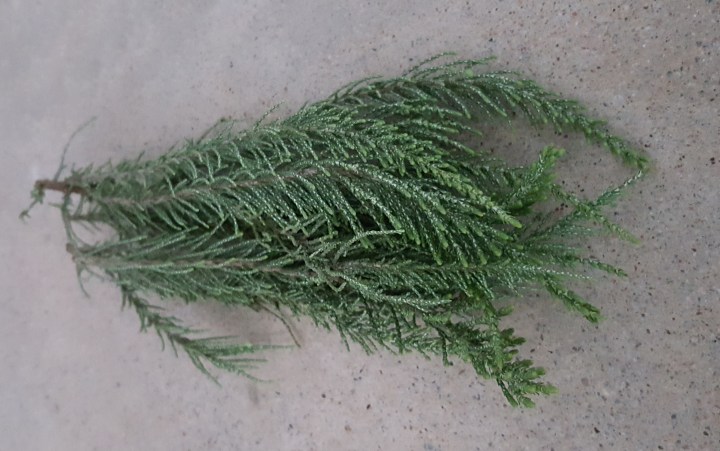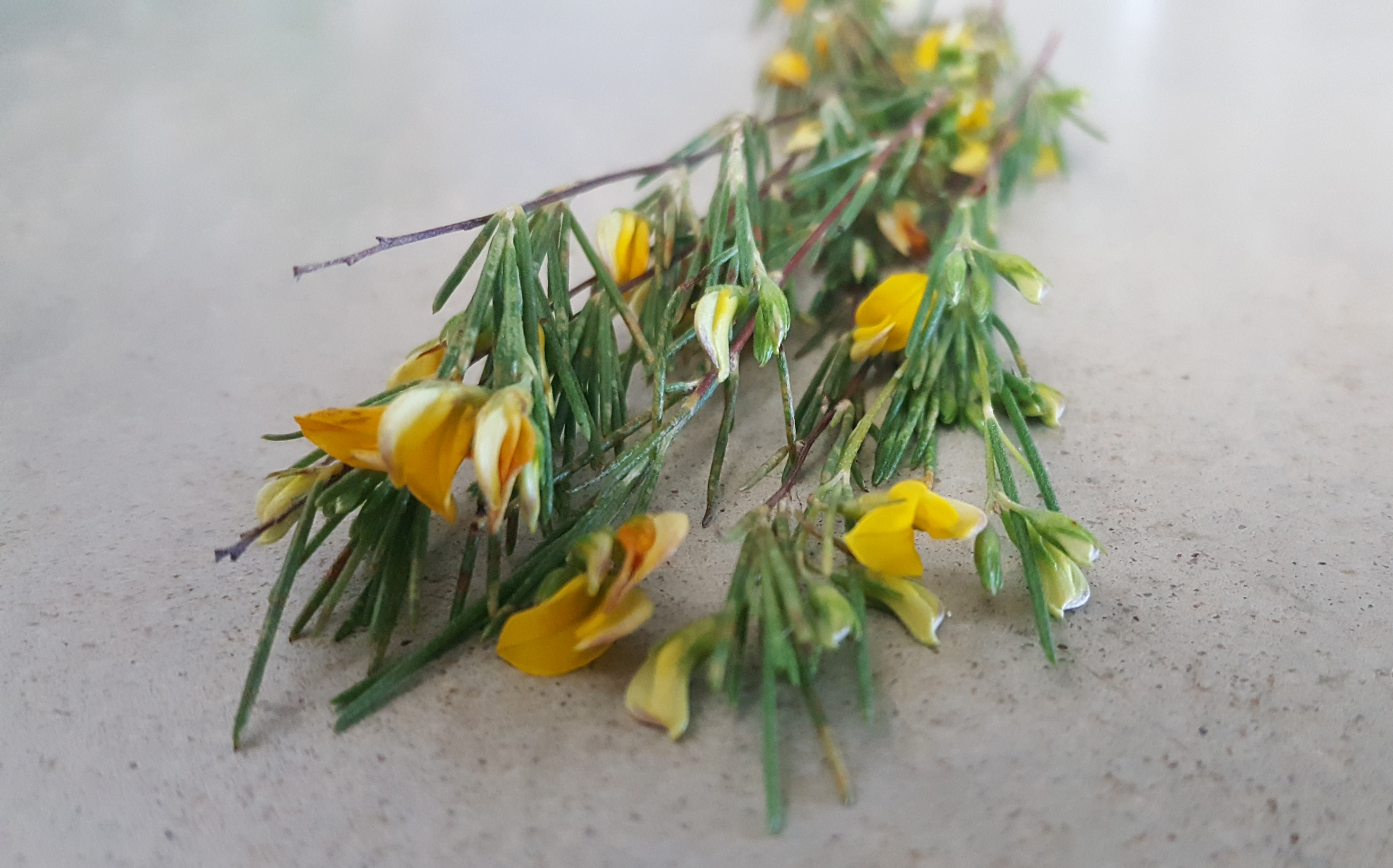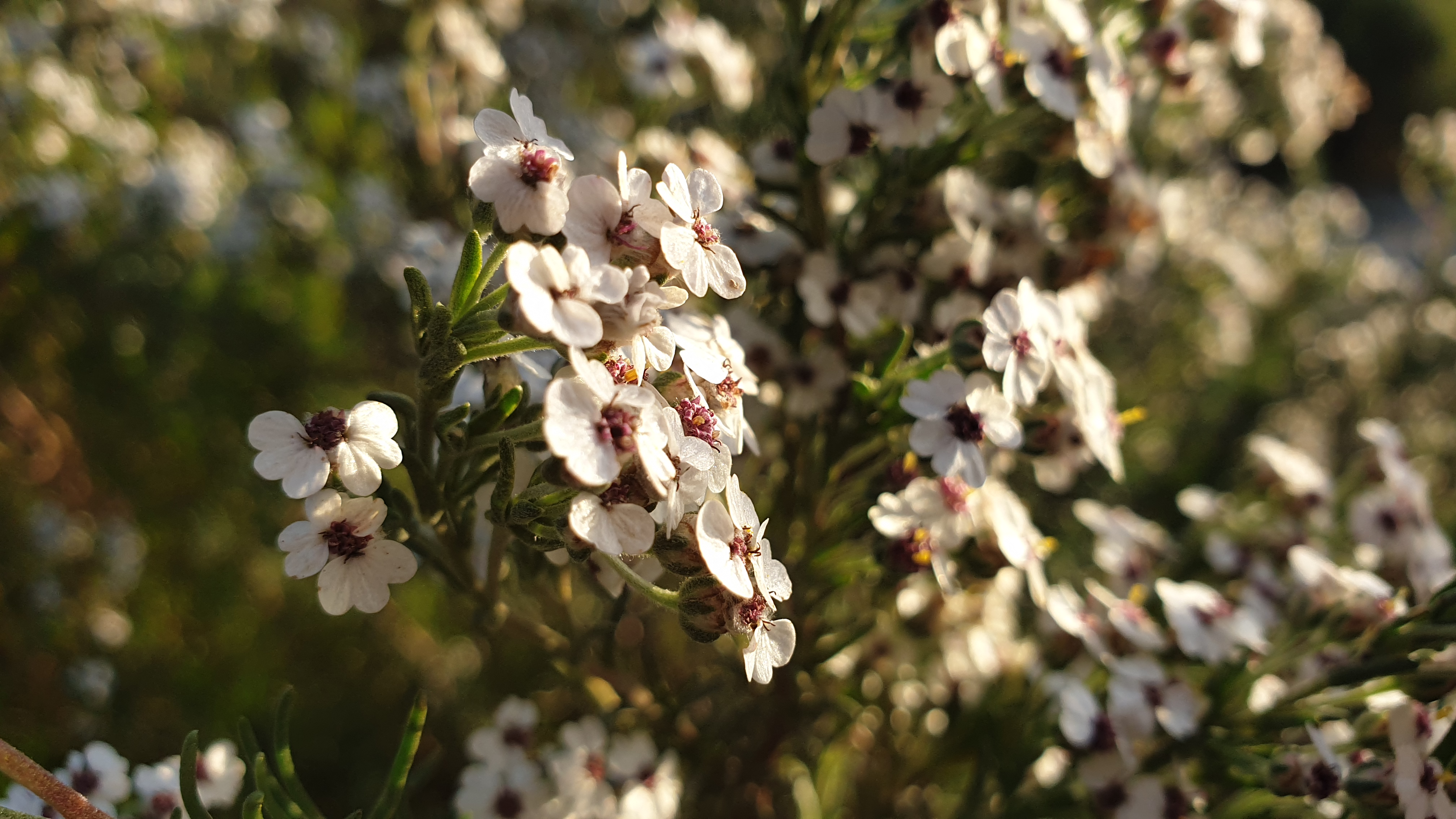MAIN INGREDIENT
Kingdom of fine herbs

Fynbos herbs are coming into their own in the South African kitchen.
Imagine there was a whole kingdom of herbs quite different from those we know and have used all our lives in our cooking – the parsley, sage, rosemary and thyme that have flavoured almost everything we’ve eaten in our lives. And all these herbs, if we’ve lived on the South African soil, have been at our feet, their fragrances perfuming the air, whenever we’ve walked in the Cape Floral Kingdom. But some of them occur far away from that kingdom; throughout the Karoo.
This came home to me this week when I made a rub. A different kind of rub. A rub of fynbos herbs. I concocted a bit of this and a bit of that, like witches around the cauldron. But no adder’s fork and blind-worm’s sting in this cauldron; nor lizard’s leg, nor owlet’s wing. In my miniature cauldron (a ramekin, actually) went kankerbos and honeybush, buchu and renosterbos; rooibos and Cape Mountain Sage, and a few grindings of black pepper of the old-fashioned sort, because it needed that.
Once I’d packed the rub onto a pork sirloin roast, I leaned in to smell it.
And it smelt of the veld.
It had the aromas of the vast, endless plains of Klein Karoo and Camdeboo, and it conjured windmill and acacia, cattle lolling and sheep grazing.
Then, after sitting uncovered in the fridge for several hours, it went into the pan, in olive oil, for browning. The fragrances immediately intensified and enriched, as if caramel had been added to the wild herbs. It was a magical moment.
I’ve cooked a few other dishes with fynbos herbs lately. I used nutmeg pelargonium and Cape Mountain Sage to flavour a potato bake. I made fynbos butter for a roast chicken, using honeybush and snowbush (kapokbos); these two lovely wild herbs also went into the stuffing and the glaze, along with prickly pear syrup, nagmaalwyn and garlic powder. And I used kapokbos, both the dried herb and the salt, in a Wagyu biltong pâté.
The fynbos herbs and salts come from SouthAfricanFynbos.com who are based in Wellington in the Western Cape where they offer the Cape Town Fynbos Experience; guided tastings in what, with overly floral language, they call a “sensory immersion” that “takes you on a flavour trail beyond the constraints of time to a mixology of veld and flower, awakening the inner explorer”. Okay. Wading past all that, what we have is 11 herbs, from buchu, rhino bush (renosterbos), snowbush (kapokbos/wild rosemary) to cancer bush (kankerbos), rooibos, honeybush, silver bush and Cape Mountain Sage, and a trio of pelargonium herbs: mint, rose, and nutmeg.
Now, we can’t chuck all of those at one dish; like conventional herbs, some can work in combination and others are best used alone. It makes sense to pair them by note or style; by “note” I mean in the way that perfumiers identify “notes” in a fragrance.

Rooibos. (Image supplied)
Rooibos and honeybush might be thought of as fruity or sweeter herbs, whereas renosterbos, kankerbos and buchu are bitter or pungent. So pair rooibos with buchu, say, or honeybush with renosterbos. Cape Mountain Sage is herbaceous, but I’d call it woody too, like kapokbos. At the pelargonium end of the spectrum, the nutmeg herb is spicy, the rose one floral, and they describe mint pelargonium as “cooling”. So, use mint pelargonium in tandem with a smidgen of chilli powder and black pepper, perhaps including honeybush to sweeten it and rose pelargonium to enhance the fragrance and flavour compact.

Kapokbos (snowbush). (Image suppled)
If you order their herbs, ask them to send you their brochure with its flavour/fragrance wheel. The one I had the most trouble getting my head around was the extremely bitter rhino bush. They recommend using this “piney” herb in a croque monsieur, a beef burger patty, lamb chops, grilled mushrooms, bitterballen (makes sense), braaied pork kebabs, eggplant, and wild mushroom ravioli.
Cancer bush: braised endive (which can be very bitter in its own right and needs something sweet), leafy salads, vinaigrette, and garlicky green beans. And so on: each of the herbs is described in the wheel, with cooking recommendations.
To show as many of the herbs off as I felt I could get away with in one dish, I concocted a fynbos rub. There was some trepidation, but, to my amazement, it worked wonderfully. It smelt and tasted of the veld, though I did (the meat being pork) add some sweetness with a baste of fynbos honey, sherry vinegar, olive oil and Dijon mustard.
Smell these herbs, taste them, close your eyes and imagine you’re in the wilds, with a crackling fire awaiting the pot. (See Tony Jackman’s recipe for pork sirloin with a fynbos rub here.) DM/TGIFood
@southafricanfynbos on Instagram / online at SouthAfricanFynbos.com / email [email protected] /
Tony Jackman is Galliova Food Champion 2021. His book, foodSTUFF, is available in the DM Shop. Buy it here.
Follow Tony Jackman on Instagram @tony_jackman_cooks. Share your versions of his recipes with him on Instagram and he’ll see them and respond.
SUBSCRIBE to TGIFood here. Also visit the TGIFood platform, a repository of all of our food writing.





 Become an Insider
Become an Insider
Comments - Please login in order to comment.